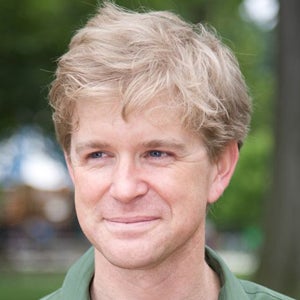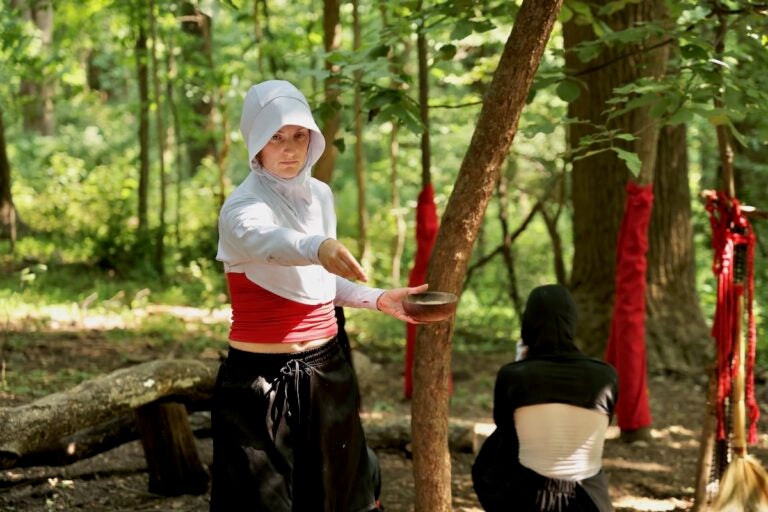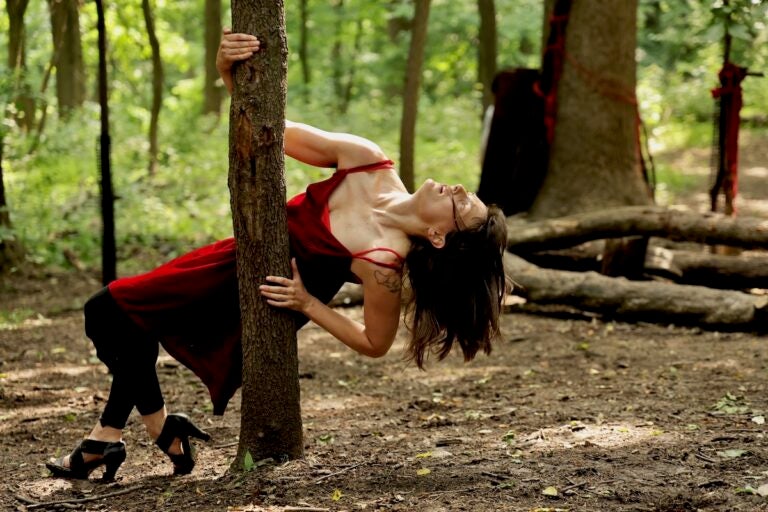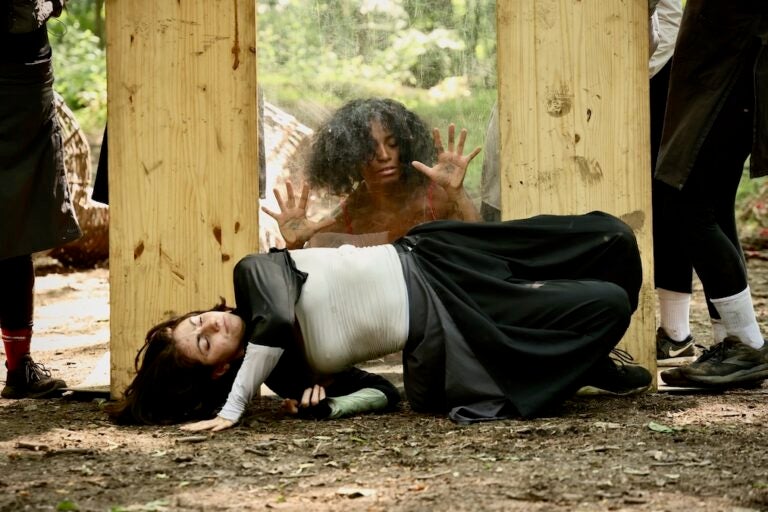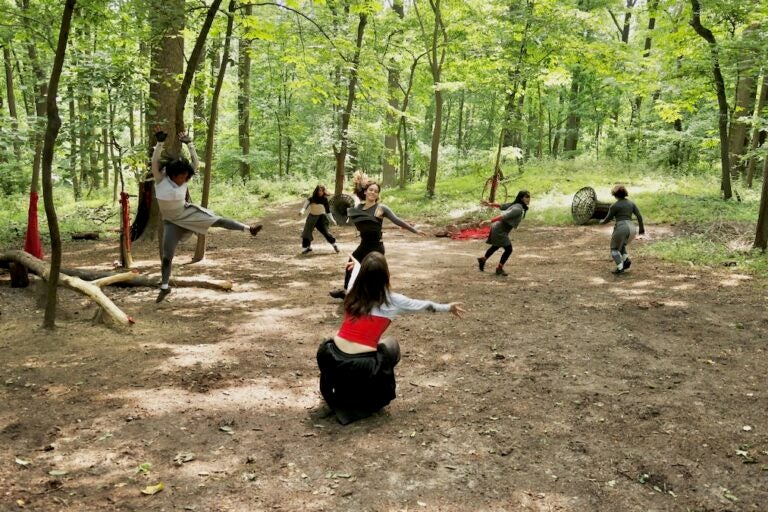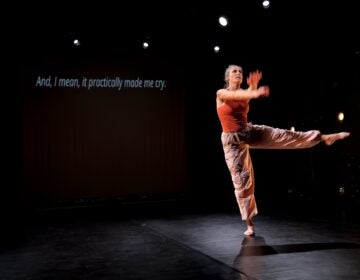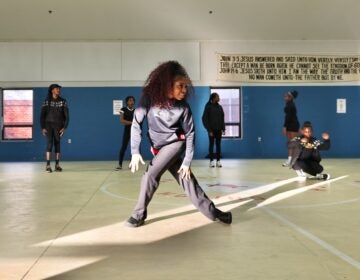‘TERRA’ weaves women’s bodies into the forest of Northwest Philly’s Schuylkill Center
Tucked into Philly’s largest tract of wild forest, “TERRA” explores ecofeminism and the disruptive forces of gravity.
From Philly and the Pa. suburbs to South Jersey and Delaware, what would you like WHYY News to cover? Let us know!
To attend the world premiere performance of “TERRA: Bodies and Territories,” audience members must drive up the Roxborough ridge to Hagys Mill Road and turn off onto a bumpy, dirt drive for about half a mile to the Schuylkill Center for Environmental Education.
There, they must park and walk into the woods about a hundred yards down a sloped trail to a crossroads of two paths covered in a leafy canopy. Around the clearing are logs cut from fallen trees serving as seating.
The performance takes place amid 365 acres of wild forest, the largest tract of unadulterated land in Philadelphia. Despite the low, omnipresent hum of the Schuylkill Expressway at the bottom of the ridge and the occasional train horn from the tracks alongside the river, there is little in view or earshot to remind audiences of a built environment.
“I was walking in and heard a Carolina wren, a blue jay, a wood peewee. There are deer surrounding us, although we can’t see them,” said Erin Mooney, executive director of the Schuylkill Center. “This piece demands that you immerse yourself in nature. It requires you to suspend any kind of connection to your previous life before you got here.”

“TERRA,” which will be performed several times over the next two weekends at the Schuylkill Center, was created by Silvana Cardell, an Argentinian-born choreographer who has been based in Philadelphia for the last 25 years.
She said her choreography would not work in a typical theater space.
“To highlight this idea of the women’s body being a territory that is inhabited and also exploited, is also dominated,” Cardell said. “A theater was too much of a controlled environment. I needed to go to the wild to express this idea.”
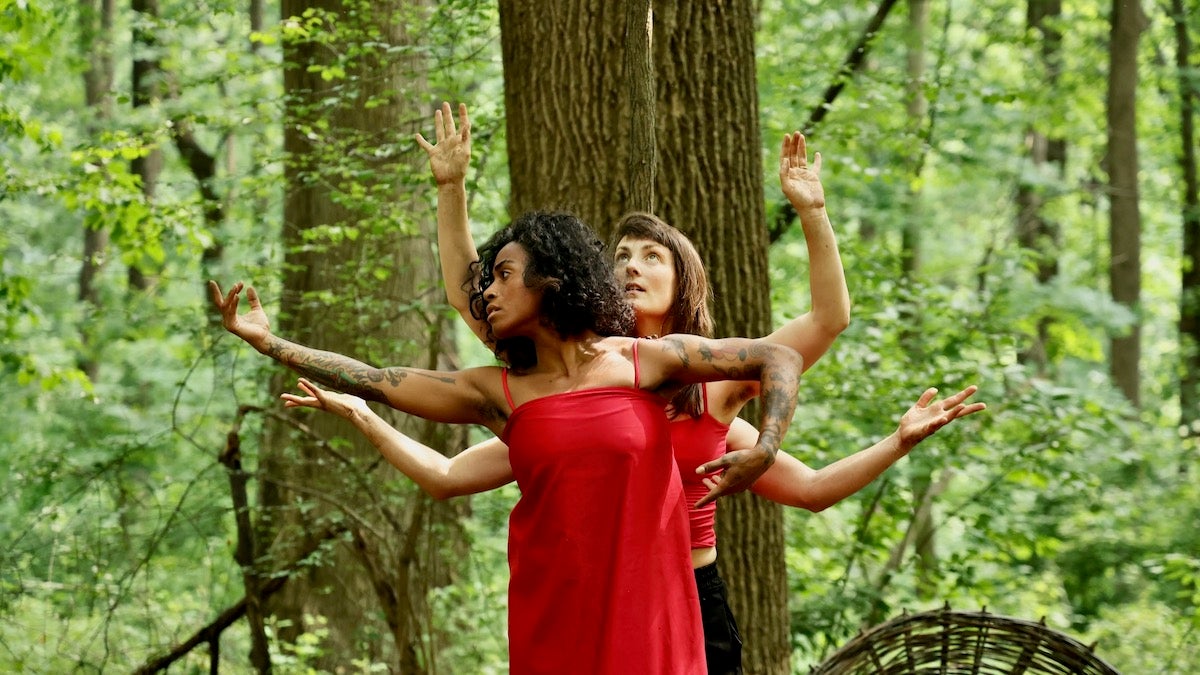
Survival of the female body
“TERRA” will be performed in early evening, when the summer sky is still light and dappling through the canopy, eliminating the need for artificial lighting. There are hidden audio speakers in the brush that play back an amplified soundtrack. Sound designer Devin Arne recorded and manipulated forest sounds to create a sonic environment for the performers to dance to.
Set designer Sarah Kavage used foraged reeds to weave stage objects and hung red braided fabric from trees. In a playful nod to feminine glamor, she carved a fallen branch into giant fingers with red-painted nails.
Cardell regards “TERRA,” supported by funds from the Pew Center for Arts and Heritage, as a form of research. She has been exploring ecofeminism, or the intersection of feminist and ecological activism. Cardell was inspired by the writings of Carol Adams, whose book “The Sexual Politics of Meat” (1990) draws a connection between the oppression of animals in the meat industry and the social oppression of women.
“It situates women’s bodies as exploited in the same way that farm animals are exploited,” she said. “That’s how the relationship between patriarchy and the exploitation of bodies came to me.”
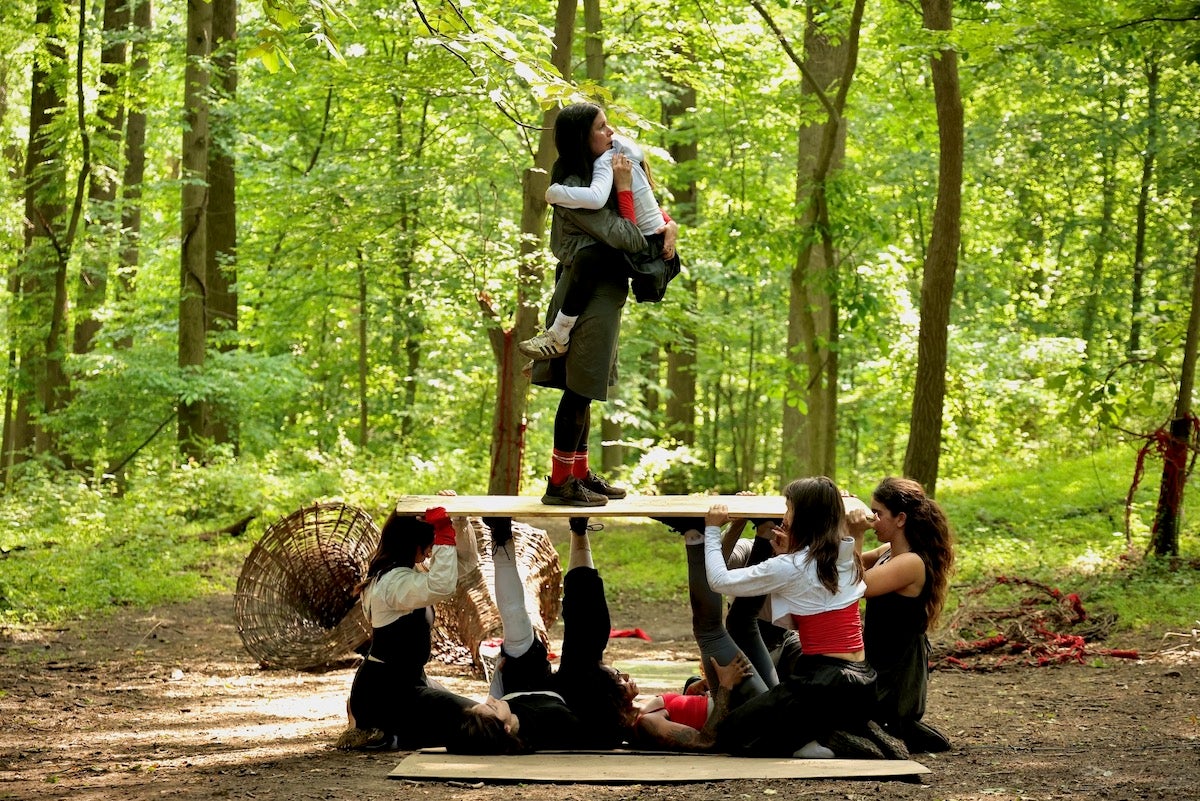
The dancers of “TERRA,” all women, represent a wide range of ages, including an 8-year-old girl and longtime Philadelphia dancer Germaine Ingram, 78.
The roughly hourlong performance unfolds in a sequence of scenes, including communing with nature to the point of transforming into trees, a ritualistic gesture of spreading dust representing mortality, a stylized birthing wherein the dancers form what appears to be a collective organism and a scene of implied violence — à la “Little Red Riding Hood” — featuring a screaming dancer in a red dress and heels stumbling through the wooded space in a panic.
The final sequence involves sheets of wood that the dancers manipulated into a structured shelter, used to represent both safety and entrapment.
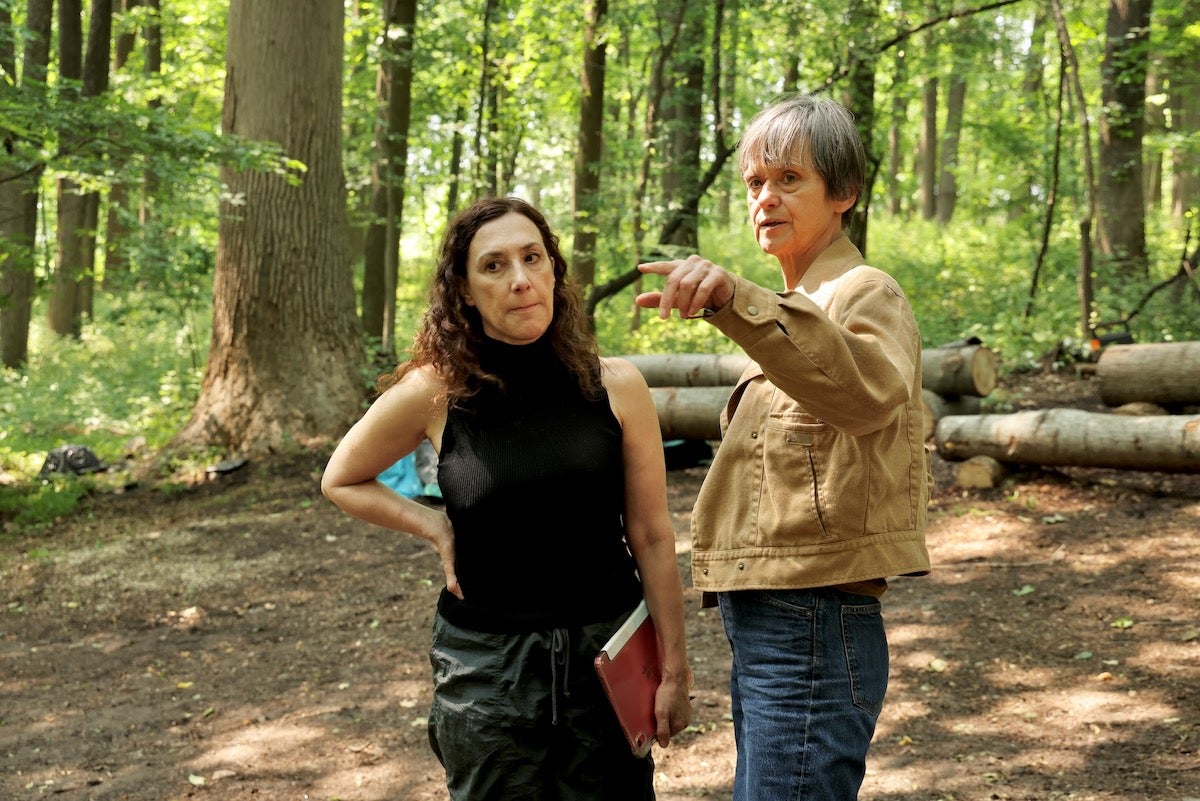
While the dance does not explicitly have a plot or tell a linear story, the piece moves through an arc of celebration and conflict. Blanka Zizka, the recently retired founder of the Wilma Theater, served as consulting dramaturg.
“It’s the survival of female body,” she said. “For us, being part of nature as a bridge to something else, maybe civilization.”
How to dance in the woods
The performers had to learn to dance on an uneven, sloped surface of dirt. They sometimes move unsteadily, catching themselves on tree trunks to avoid pitching downhill, their black sneakers occasionally slipping on the loose soil. By the end of the performance, their bodies are smeared with dirt and they have dead leaves in their hair.

The audience, too, must adjust to forces of nature. Sitting on a sloped plane, everyone viscerally feels the sideways pull of gravity.
“I didn’t want to recreate a forest in the theater,” Cardell said. “You can recreate a forest anywhere with stuff, but you won’t have the smell. You won’t have this gravity pull that we’re feeling right now.”
“TERRA: Bodies and Territories” will be performed June 13–15 and 20–22 at the Schuylkill Center for Environmental Education.
WHYY is your source for fact-based, in-depth journalism and information. As a nonprofit organization, we rely on financial support from readers like you. Please give today.


